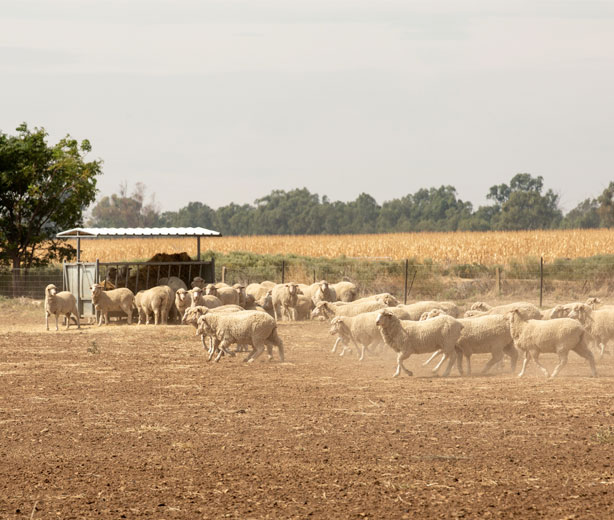
Macroeconomic Conditions
Macroeconomic Conditions
Domestic
Feed Grain Demand
Farmers in NSW faced challenging conditions with higher feed costs, low water availability and high water costs in addition to drought.
Hay and grain were in short supply on the east coast and domestic prices surged. Hay prices reached $600 per tonne in northern NSW156 in September 2018.
Grain prices reached their highest point in winter and spring 2018 with low supplies available and high feed demand from livestock producers. Wheat prices reached $410 per tonne in the Central West region in August 2018, and $495 per tonne in the Bega region in October 2018. The additional demand for hay and grain from cattle and sheep producers squeezed margins further for dairy, pig and poultry farmers156.

Water
Low general security water allocations in NSW led to higher prices, as more buyers competed for lower water volumes157.
The Murrumbidgee regulated river ended the year at 7% allocation for general security water licences. With 0% general security allocations at the end of the year158, the NSW Murray and Lower Darling river regions had emergency drought restrictions in place, limiting use to town water supply, domestic and stock use and permanent plantings.
Approximately 4.9 million ML in water allocations were traded in the southern Murray Darling Basin in 2018-19, 31% less volume than last year171.
Prices for water entitlements in NSW increased substantially over 2017-18 levels, particularly for High Security entitlements, with the volume weighted average price 58% higher at $5,564 per share (average of all regulated river water sources). General Security entitlements were 32% higher in 2018-19 at $1,929 per share (average of all regulated river water sources), with most of the trading occurring in the NSW Murray and Murrumbidgee171.
International
Trade Tensions
The economic growth of some of Australia’s key trading partners eased in late 2018 and continued at a moderate pace in early 2019; a slowdown compared to 2017 and early 2018159. The escalation in trade tensions between the US and China, lower consumer confidence in the EU, and natural disasters in Japan were major reasons for the slowdown163.
The trade tensions in the US and China caused a slowdown in global trade and created uncertainty among businesses due to the unpredictability of tariff changes and expectations around future policy directions162. China increased tariffs on many American agricultural commodities in April 2018, including pork, wine and many fruit and nuts164. In November 2018 China announced an anti-dumping investigation into Australian barley, which has caused uncertainty among grain growers and had not been resolved by the end of the financial year.
Trade Opportunities
Exchange rate: The Australian dollar depreciated against major currencies over 2018-19 which benefitted export-oriented commodities. The average value of the Australian dollar was 72 US cents over the year, compared to 77 US cents in 2017-18. There were similar declines against the Chinese Yuan and the Japanese Yen, Australia’s major agricultural trade partners161.
Partnerships and trade agreements: During 2018-19 the Comprehensive and Progressive Agreement for Trans-Pacific Partnership came into force for Australia and a number of trading partners. Australia also concluded negotiations for preferential trade agreements with Hong Kong and Indonesia that had not yet come into force.
Fertiliser Prices
- DAP ($/mt)
- Urea ($/mt)
IGC Grains and Oilseeds Freight Index
Baseline 1 July 2018 = 100
- IGC Grains and Oilseeds Freight Index
- Australia sub-index
African Swine Fever
African Swine Fever is a highly contagious viral disease that affects domesticated and wild pigs. It was first reported in the Liaoning province in China in August 2018. Since then there have been outbreaks reported in every province in China. As at July 2019 China had reported 155 outbreaks of African Swine Fever to the World Organisation for Animal Health165.
China is the world’s largest consumer of pork and has the largest herd of approximately 442 million head, over half of the world pig population. Official estimates indicate the herd has decreased by 32% over the year to July 2019166, which would imply a reduction of approximately 140 million head164. The USDA estimates pork production in China will fall by 6 million tonnes by the end of 2019.
The shortfall in supply increased pork prices and meant Chinese consumers have increased demand for beef, sheep and lamb meat, poultry and plant proteins. For NSW there was a 101% increase in the value of beef exports and a 57% increase in value of sheep and goatmeat exports to China.
With the reduction in the pig population there was also a significant fall in demand for soybeans.

